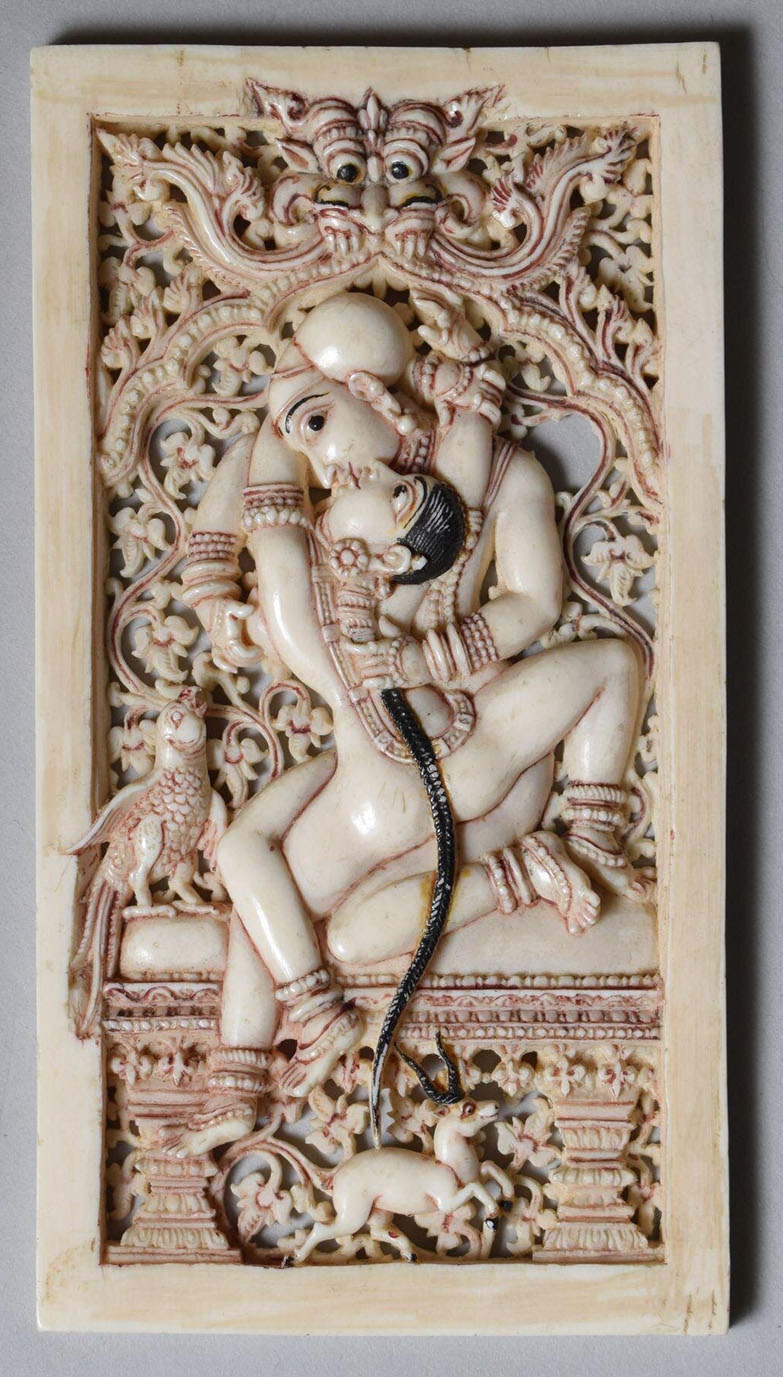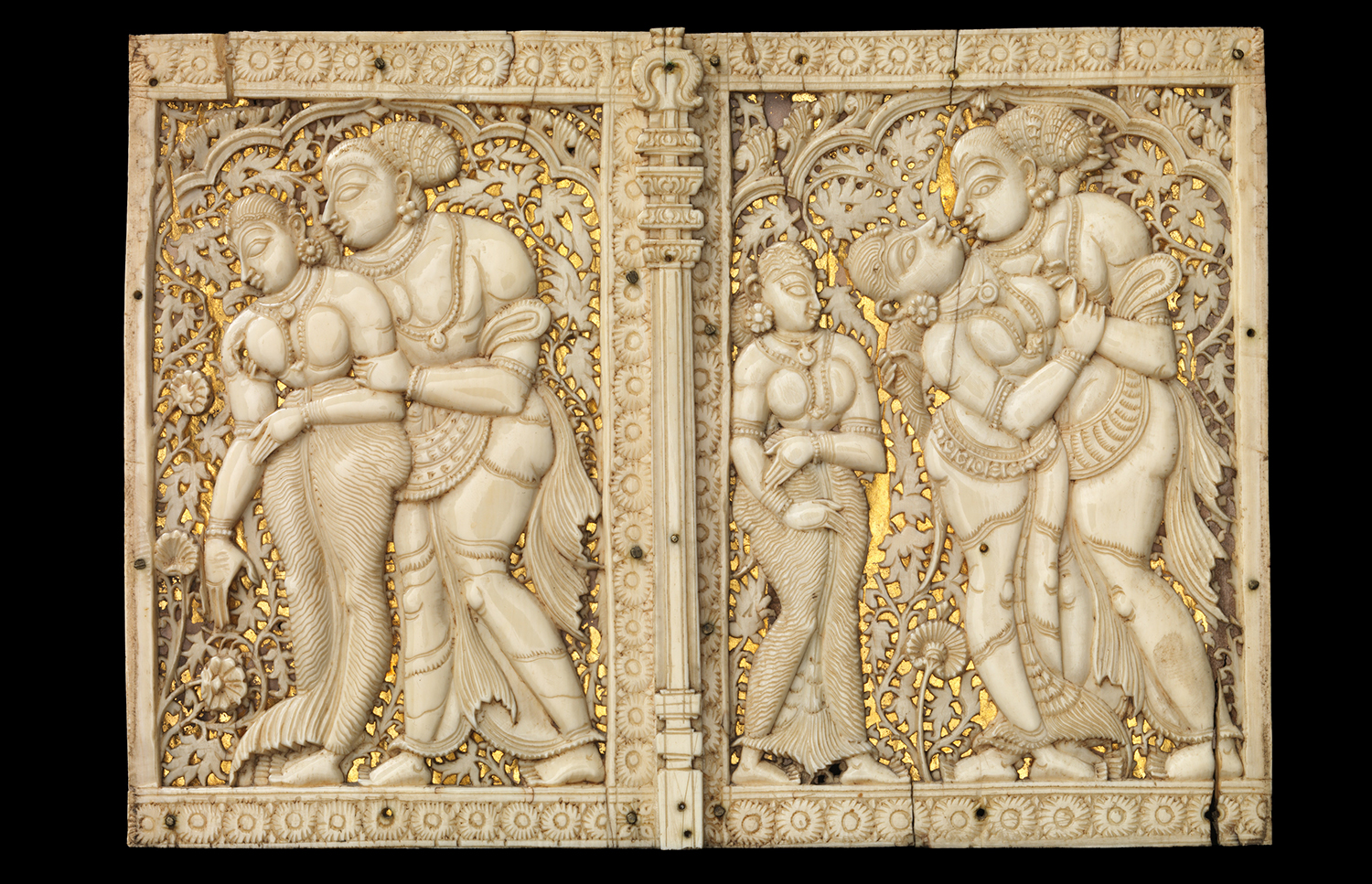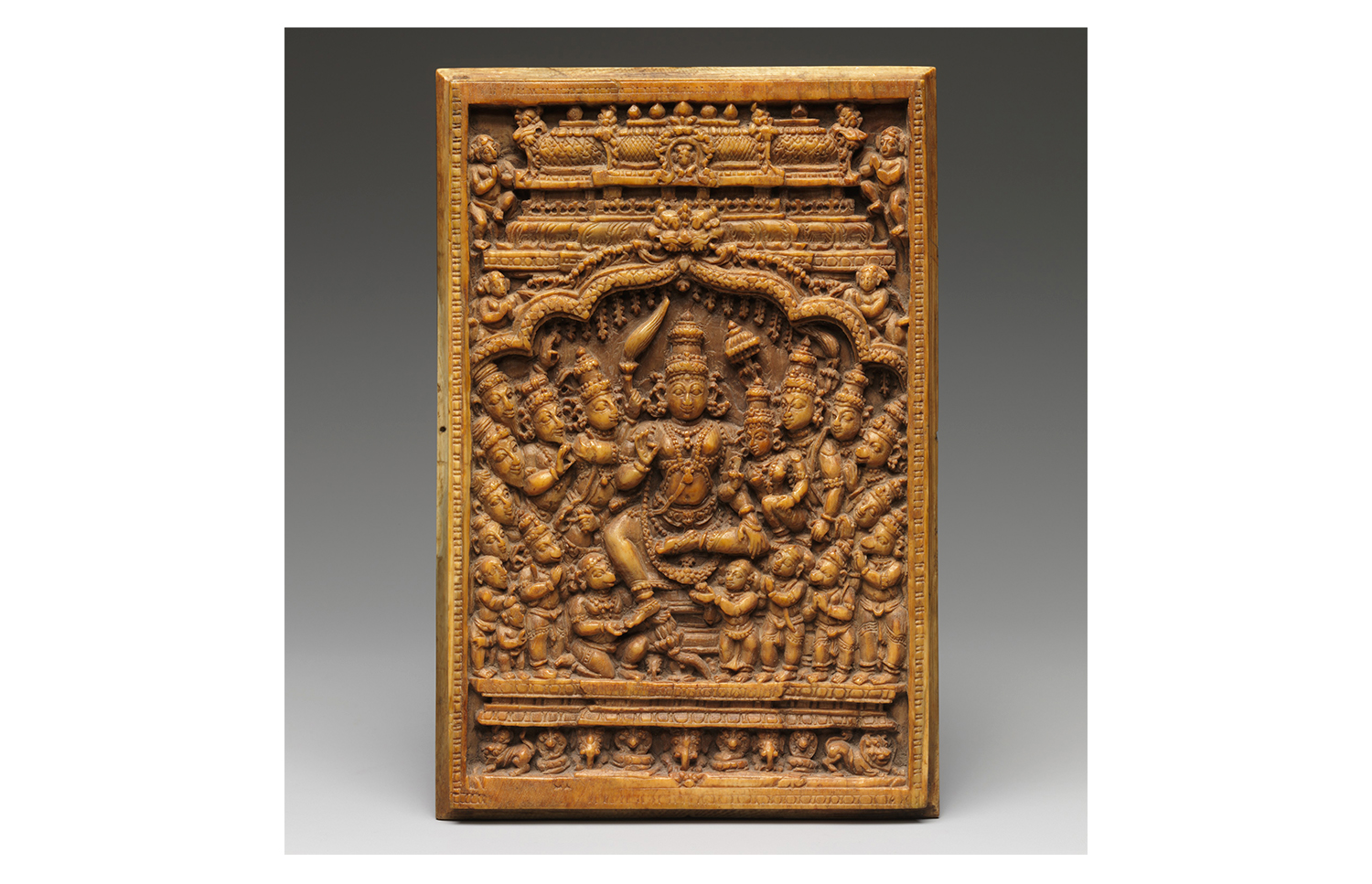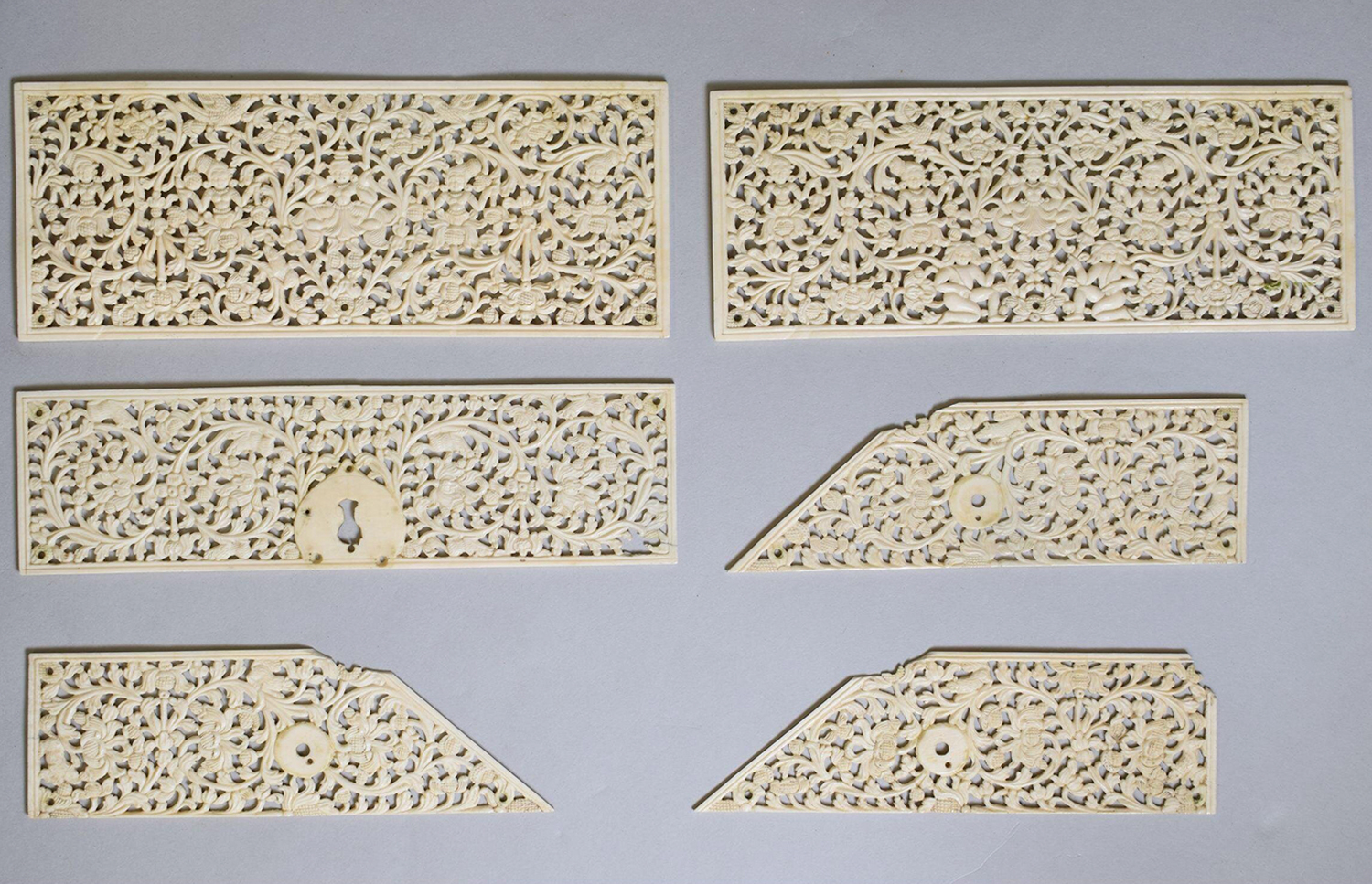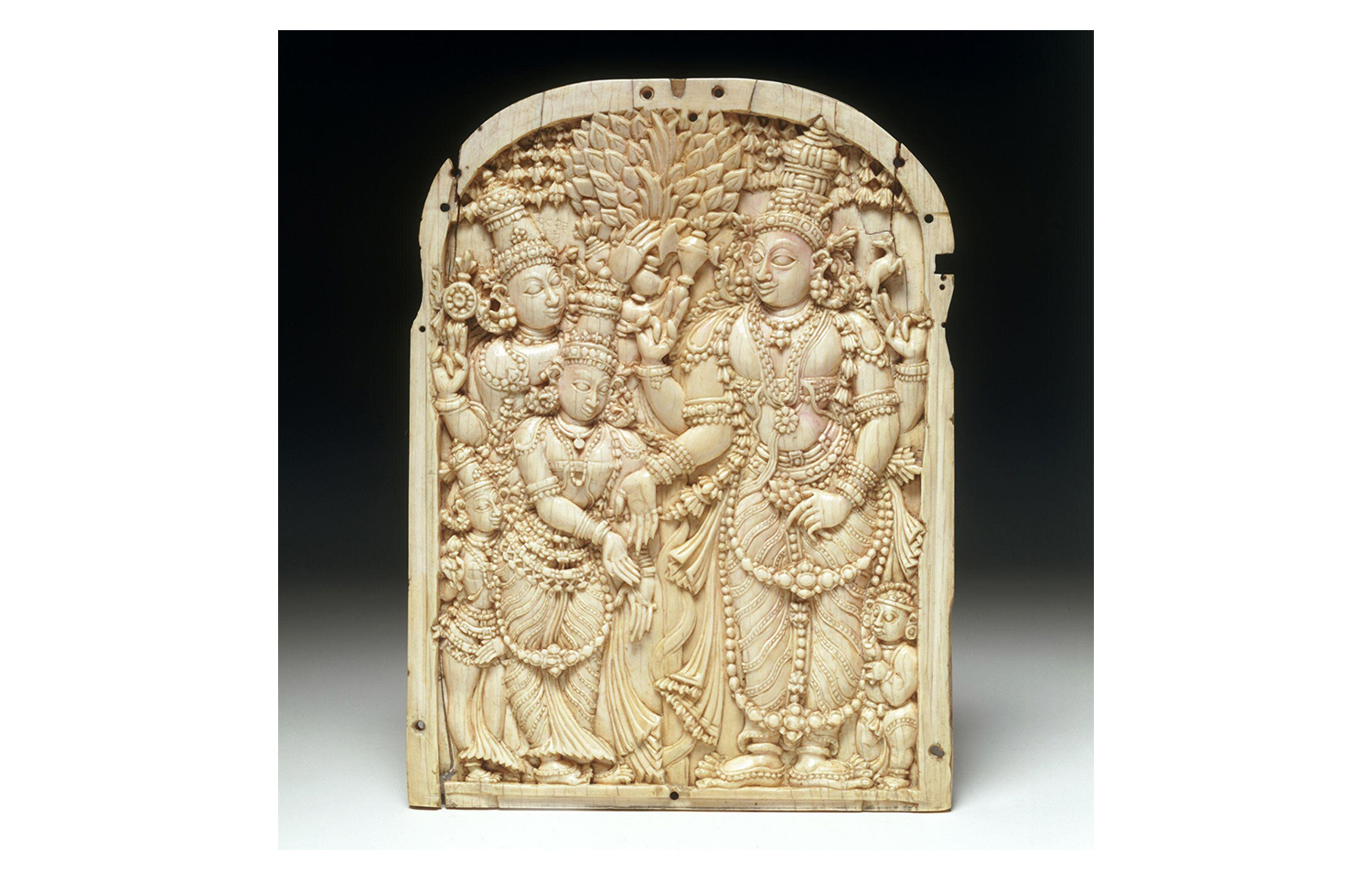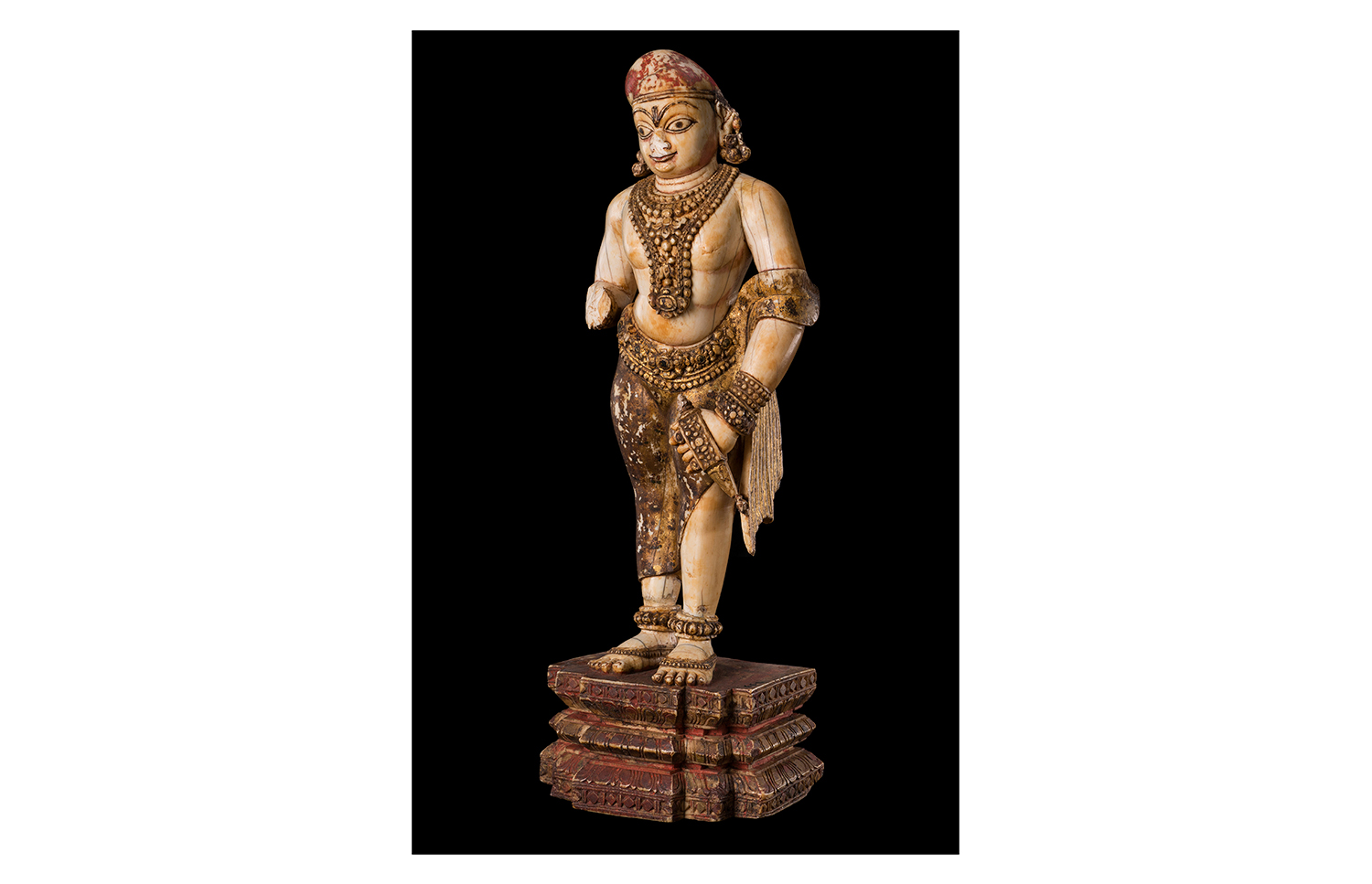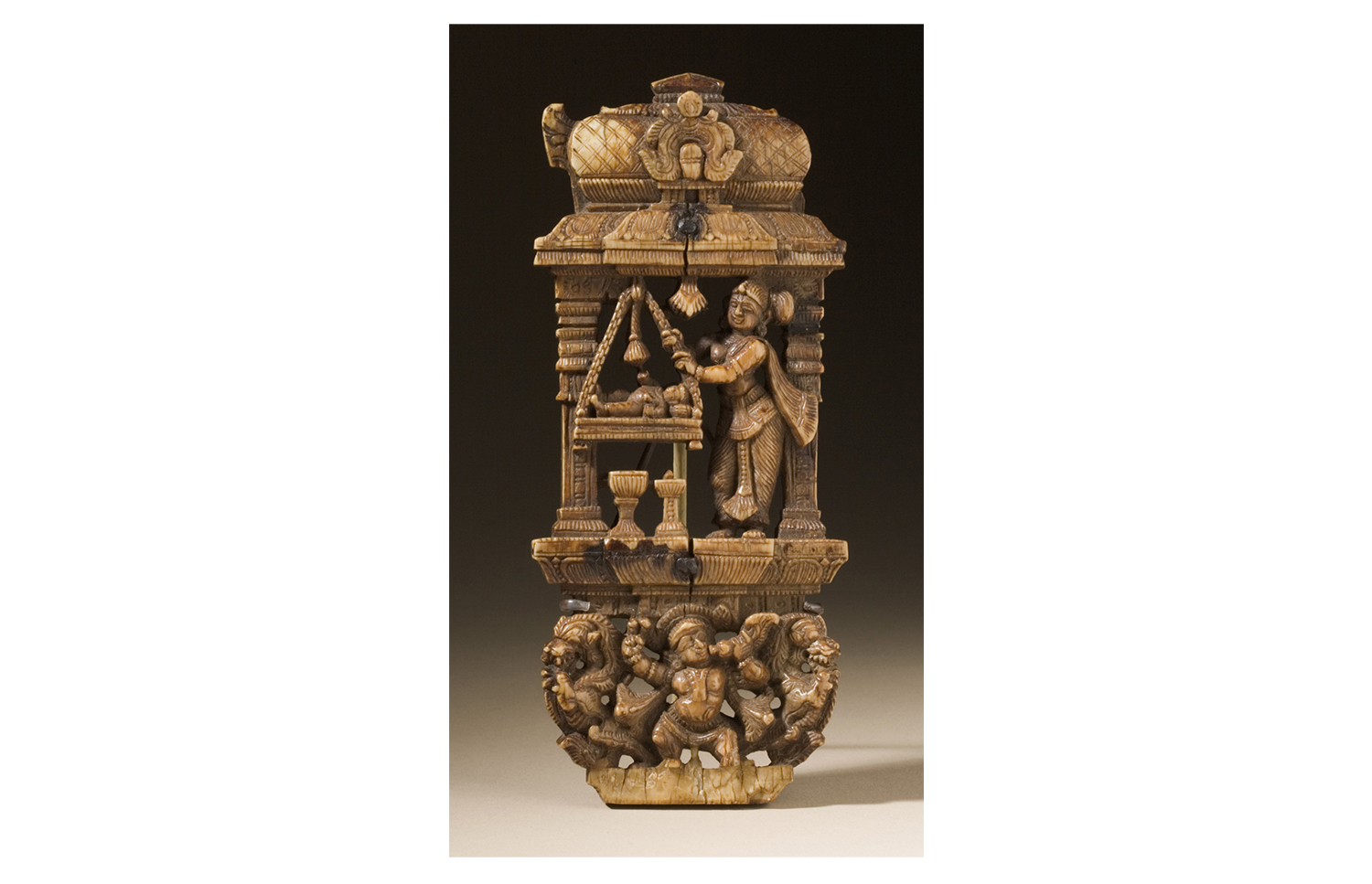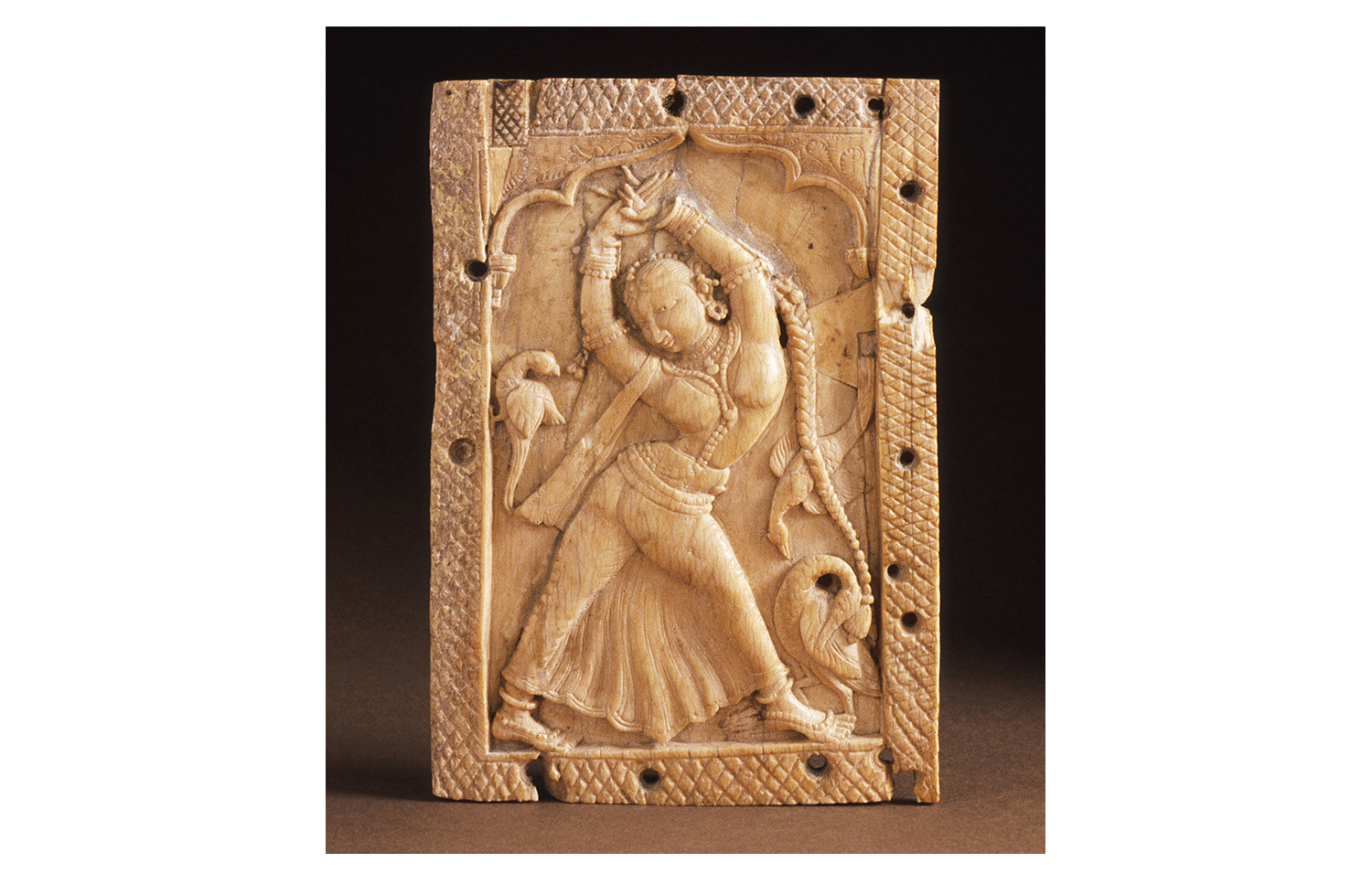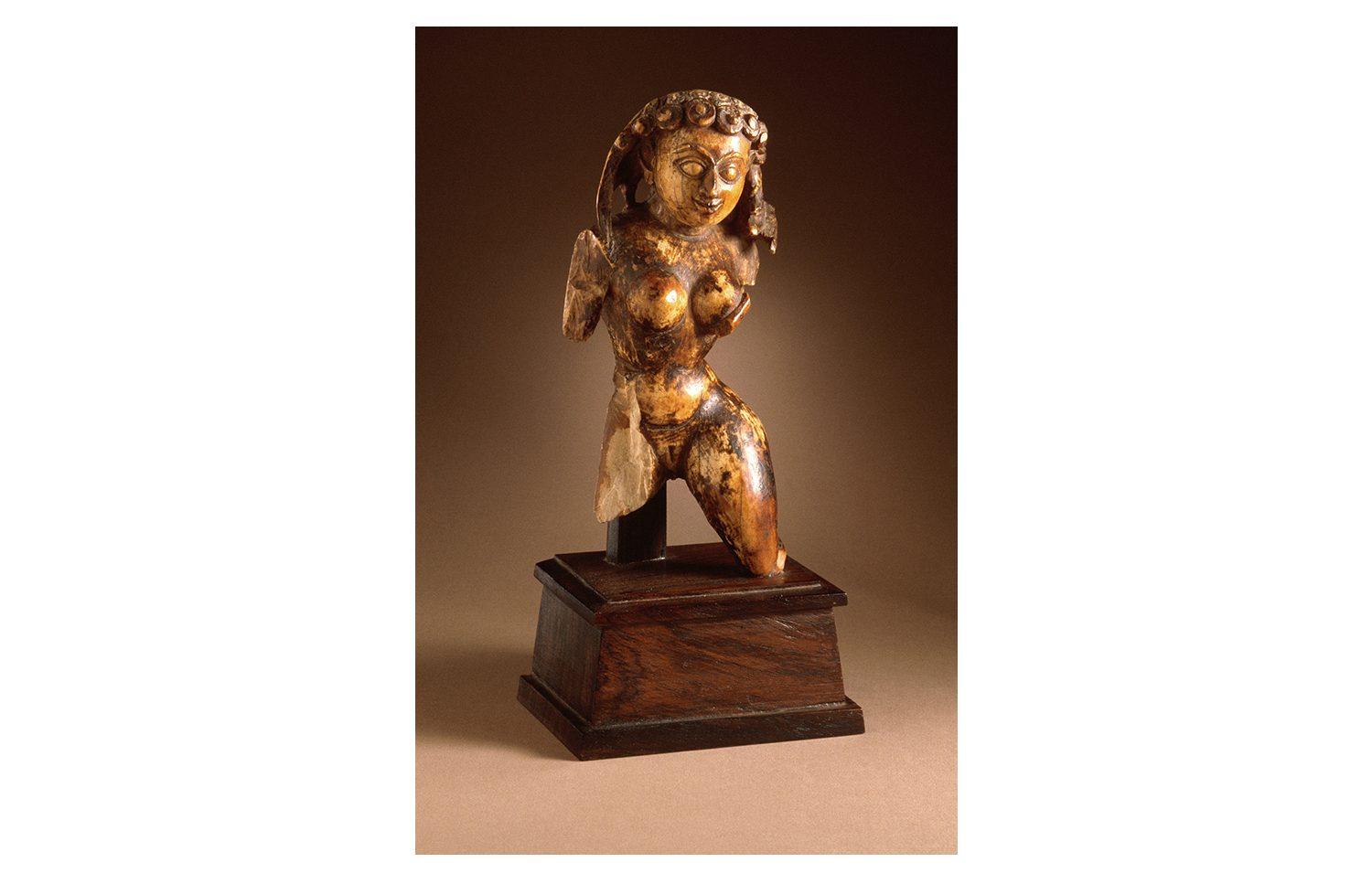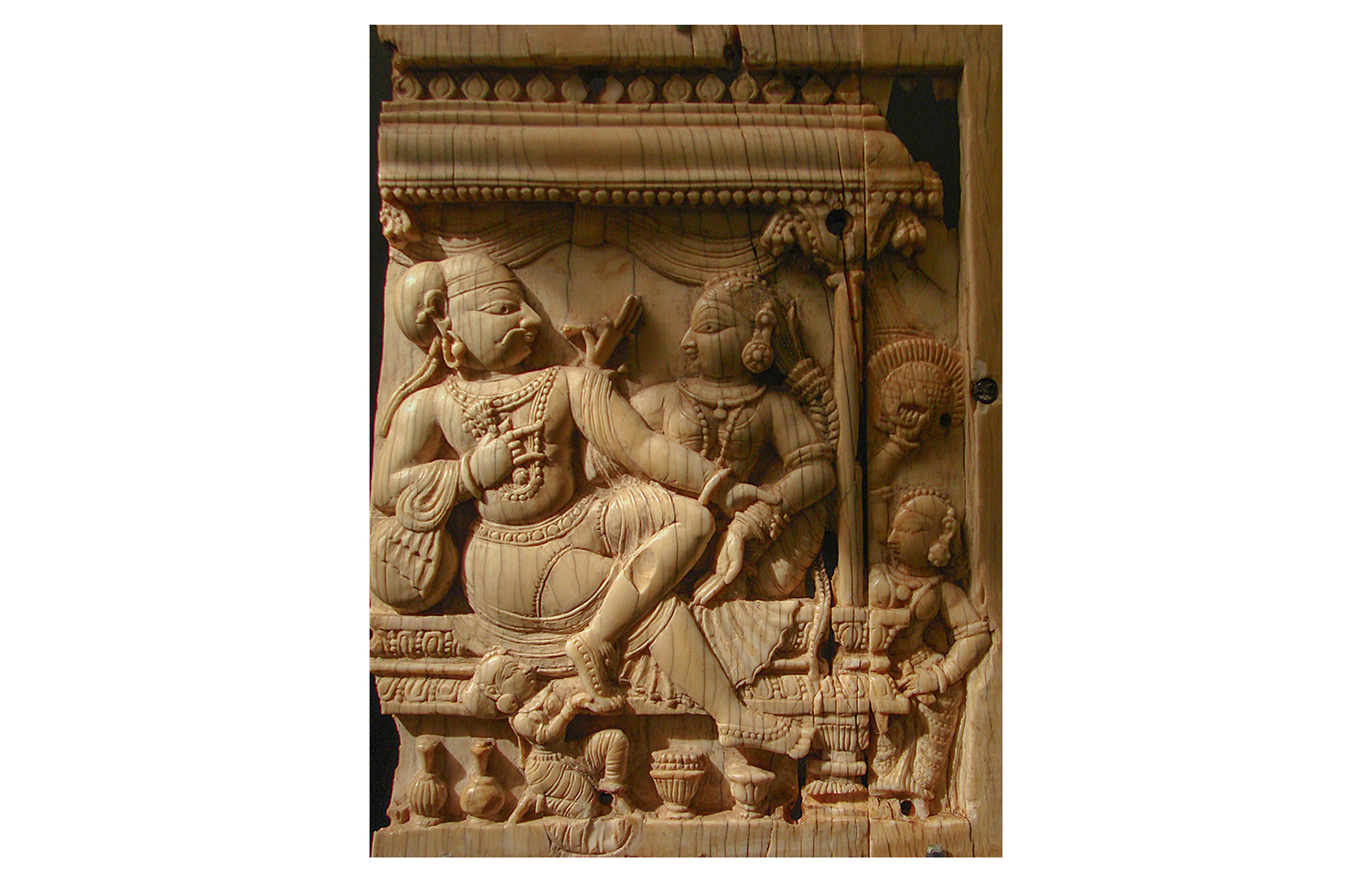ARTICLE
Nayaka Ivories
Although ivory carving was practised in southern India well before the sixteenth century, and continued into the colonial period, these are considered far less sophisticated than those made with Nayaka patronage. Today, collections of these miniature works in ivory can be found in the collections of major temples in Tamil Nadu, as well as institutions abroad such as the Metropolitan Museum of Art in New York, the Museum of Fine Arts in Boston, the British Museum and the Victoria and Albert Museum, London.
Bibliography
“Casket Panels Ivory Southern India, possibly Travancore, Nayak Period.” Sotheby’s. https://www.sothebys.com/en/auctions/ecatalogue/2007/indian-and-southeast-asian-works-of-art-n08332/lot.32.html
Coomaraswamy, Ananda K. “An Ivory Casket from Southern India.” The Art Bulletin 23, no. 3 (1941): 207–12. https://doi.org/10.2307/3046770.
“Ivory relief of Rama and Lakshmana.” Google Arts & Culture. https://artsandculture.google.com/asset/ivory-relief-of-rama-and-lakshmana/SAG7js840thQ_A?hl=en
Guy, John. “A ruler and his courtesans celebrating Vasantotsava: courtly and divine love in a Nayaka kalamkari.” In Sultans of the South Arts of India’s Deccan Courts, 1323-1687, edited by Navina Najat Haidar and Marika Sardar. New York: The Metropolitan Museum of Art, 2011.
“Marriage of Shiva and Parvati.” V&A Museum. https://collections.vam.ac.uk/item/O17691/marriage-of-shiva-and-parvati-relief-unknown/
“Rama, Sita, and Lakshmana being Honored by Sages, Hanuman, and his Army.” The MET Museum. https://www.metmuseum.org/art/collection/search/38551
“Two box panels with mithuna couples.” The MET Museum. https://www.metmuseum.org/art/collection/search/78873




